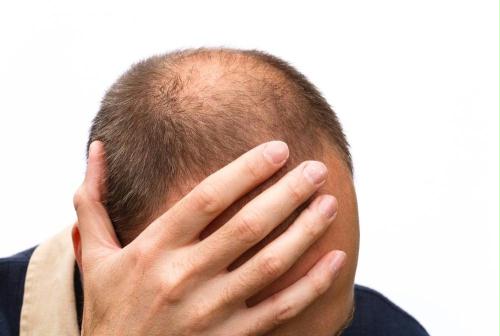Greasy hair
Greasy hair appears dirty, greasy, oily, shiny and often has an unpleasant odor.
Individuals who have greasy hair often also have other areas of the skin (nose, forehead, chin) that are quite greasy (called “seborrheic” skin).

Scientific collaboration between Professor Marco Toscani and Dr. Pasquale Fino, Chair of Plastic, Reconstructive and Aesthetic Surgery, Umberto I Health Center – “Sapienza” University of Rome.
This is very short hair, between 1 cm and a maximum of 2 cm in length, which usually has insufficient pigmentation. This hair has a base structure that is quite large, almost like normal hair. It then tends to get smaller towards the end, thus taking on the form of a very pointed cone.
This hair has a strong tendency to fall out.
Cuneiform or dwarf hair looks a lot like hair in a normal growth phase. However, unlike this hair, it does not grow beyond this length and has the tendency to disappear permanently.
This phenomenon is notable during the terminal phase of seborrheic hair loss, characterized by hair loss caused by seborrhoea.

Greasy hair appears dirty, greasy, oily, shiny and often has an unpleasant odor.
Individuals who have greasy hair often also have other areas of the skin (nose, forehead, chin) that are quite greasy (called “seborrheic” skin).
Psychogenic alopecia is a type of hair loss related to stress. Though not yet scientifically explained, this connection is well-known in the experience of those working with the problem. In addition to stress, other causes are personality disorders, states of anxiety and depression, all of which are conditions of acute or chronic stress.
The life cycle of hair and its subsequent growth occur at a speed of 1-1.5 cm per month. Hair is a living element that follows a follicle cycle with an average duration of 2-6 years. In humans, unlike other mammals that are subject to a periodic change, this cyclic evolution is not synchronous (therefore each hair is independent from the others).
The term Telogen Effluvium was introduced for the first time by Kligman (*) in 1961 to introduce an acute hair loss of benign origin that follows an intense and short period of stress of different types. Subsequently, Rebora (**) introduced the concept of chronic Telogen Effluvium.
Scalp pain and irritation (or trichodynia) are pathological conditions that affect both women (in a greater percentage) and men (in a lower percentage). The pain felt on the scalp, spontaneous or caused by treatment, and in particular around the roots of the hair, may be more or less intense, alternating at times between periods of disappearance, associated with burning, tingling or itching.
With the term Telogen Defluvium we mean a modest, not excessive, loss of hair in the telogen phase, but which tends to often be irreversible, with the precise characteristics of hair in decay or involution. The hair that falls out is usually short and fine, with bulbs that are undeveloped and reduced in size.
Laissez nos experts trouver la meilleure solution pour vous.
Réservez une consultation avec nos experts. En savoir plus sur les solutions CRLAB.
Laissez nos experts trouver la meilleure solution pour vous.
Nos solutions autour de la perte de cheveux
Les bienfaits de nos traitements trichologiques sont cliniquement prouvés. Ces soins capillaires nourrissant et rééquilibrant permettent de retrouver un cuir chevelu sain et des cheveux plus forts et beaux.
Notre dispositif médical, certifié, breveté, et réalisé sur mesure en Italie, est une solution qui intègre de vrais cheveux dans les zones où vous souffrez d’amincissement ou de pertede cheveux.
Nous travaillons avec les meilleurs professionnels pour trouver les implants capillaires qu’il vous faut.